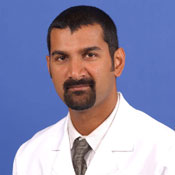Program Information
Nuclear Medicine 102
S Kappadath1*, P Slomka2*, (1) UT MD Anderson Cancer Center, Houston, TX, (2) Cedars-Sinai Medical Center, Los Angeles, CA
Presentations
TH-CD-210-0 (Thursday, July 16, 2015) 10:00 AM - 12:00 PM Room: 210
There have been significant recent advances in SPECT/CT and PET/CT for Oncology and Cardiology. In oncologic imaging, some commercial SPECT/CT systems now output quantitative uptake values; calibration and calculation of these quantitative uptake values will be discussed. Advances in PET detector design and PET data acquisition modes that have implemented in commercial PET/CT systems will be presented. Innovations in iterative reconstruction of SPECT/CT and PET/CT will also be described.
In cardiac imaging, novel collimator designs, such as multi-pinhole and locally focusing collimators arranged in geometries that are optimized for cardiac imaging have been implemented to reduce imaging time and radiation dose. These new collimators have been coupled with solid-state photon detectors. The new SPECT scanners demonstrate up to a 7-fold increase in photon sensitivity and up to 2 times improvement in image resolution. Although PET scanners are used primarily for oncological imaging, cardiac imaging can benefit from the improved PET sensitivity of 3D systems without inter-plane septa and implementation of the time-of-flight reconstruction. Additionally, all major PET vendors now implement resolution recovery techniques. These new methods improve image contrast, image resolution, and reduce image noise for cardiac imaging. New quantification techniques have been proposed for analysis of cardiac SPECT and PET images. These include direct change analysis, motion-frozen analysis, hybrid quantification of SPECT and anatomical CT angiography data, and integration of several quantitative parameters in composite scores.
Learning Objectives:
1. To discuss clinical implementation of commercial quantitative SPECT/CT systems
2. To describe advances in PET detector design and data acquisition
3. To report on innovations in iterative reconstruction of SPECT/CT and PET/CT
4 Describe novel hardware designed for cardiac SPECT
5. Understand how recent hardware advances in PET/CT are relevant to cardiology
6. Describe new software techniques for quantification of cardiac SPECT and PET
Contact Email:





